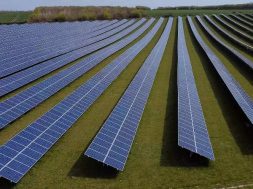
New production technique to cuts cost of solar cells by more than 10pct
Imeche reported that a new production technique has cut the cost of solar cells by more than 10%, potentially boosting the technology’s global ascent even further. Solar energy already has comparable costs to conventional forms of electricity and is the fastest growing energy source, said materials science and electrical engineering professor Joshua Pearce from Michigan Technological University in the US. He said that “Improving cost per unit power at the cell level can have massive effects downstream. Margins are extremely tight. Everyone’s trying to push costs as low as possible.”
To tackle the issue, Pearce and fellow researchers during his sabbatical at Aalto University in Finland investigated the material properties of cells. Silicon used to capture light on solar cells comes in two main forms – perfect crystals that produce higher efficiencies but cost more, and cheaper multi-crystalline silicon that offers lower efficiencies.
Researchers already knew that nano-texturing silicon with dry etching results in a black, highly-efficient material. The process transforms flat surfaces into “forests” of nanoscale needles, trapping light.
Defects in high-surface area materials can also hurt electrical performance, but the researchers found treating the material with an appropriate atomic layer deposition (ALD) mitigated the effect of the defects.
Although dry etching and ALD were previously considered too expensive for practical use, higher production costs were offset by efficiency gains and being able to use cheaper multi-crystalline silicon, cutting the overall cost per unit by 10.8%. Optimisation could boost efficiency even further, Pearce claimed.
Source: steelguru
Related posts:
- Spire Corporation Completes Sale of Sun Simulator Business; will Focus its Efforts on Manufacturing Lines
- IDRO and SCHMID Group start collaboration to set up a fully integrated PV manufacturing facility in Iran
- Price Trend: PV Cell and Module Prices Become the Key to Supply and Demand amid Policy Uncertainties
- How much of impact would a 25% weight decrease on a panel be to the industry?















